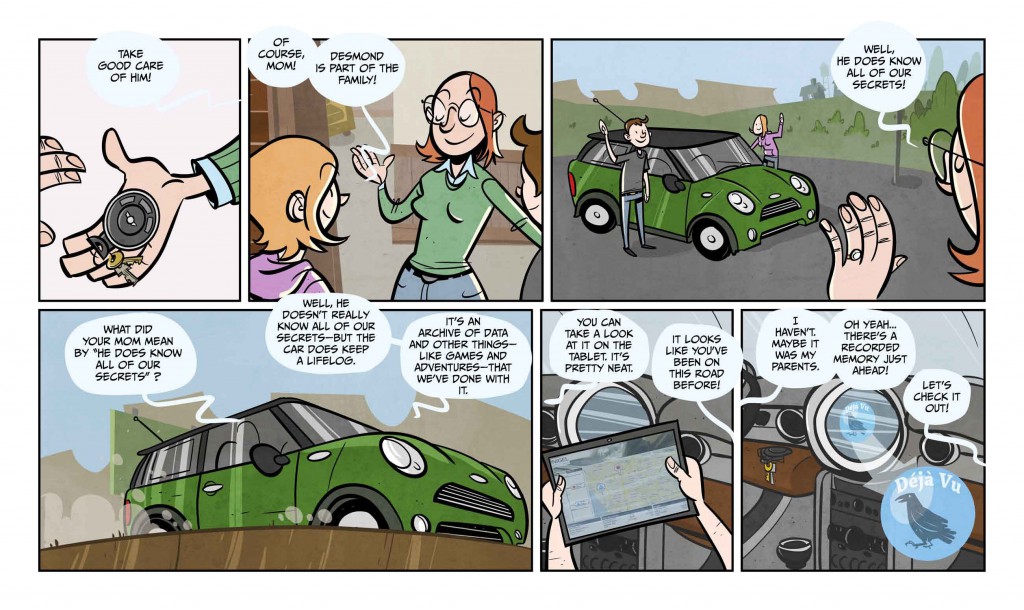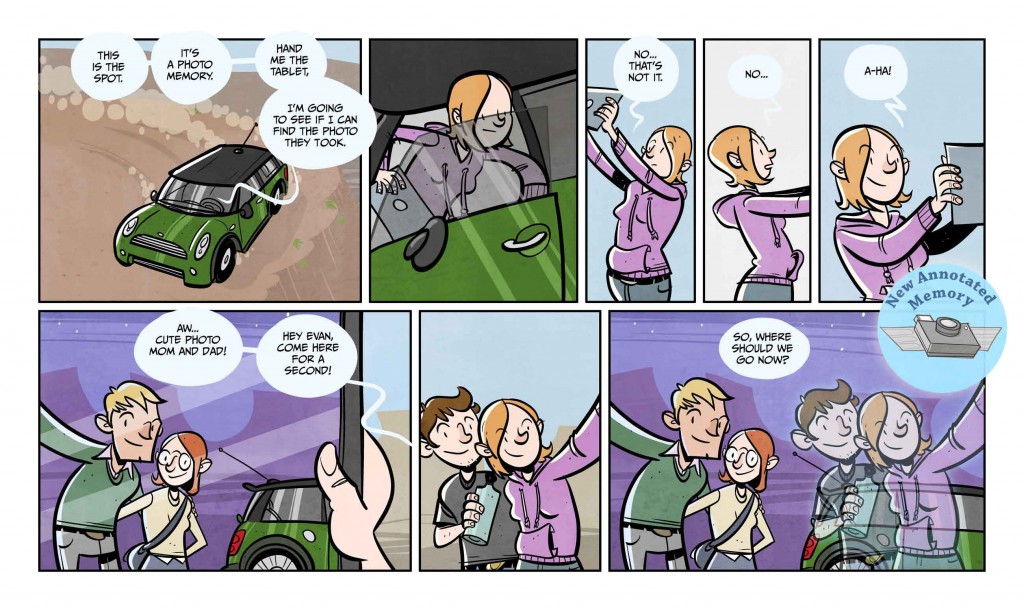This project extended our work with automotive lifelogging by using in-car sensors to engage drivers in ongoing discoveries about their vehicle, driving environment, and social context throughout the lifecycle of their car. A goal of the design was to extend the contexts of automotive user-interface design by (1) looking inward to the imagined “character” of the car and (2) looking outward to the larger social context surrounding a drive. We deployed storytelling and theatrical strategies as a way of moving our thinking outside the familiar constraints of automotive design. These unique methods help us to extend the concept of a lifelog to consider the “lives” of objects and the relationship between humans and non-humans as fruitful areas of design research. This research project culminated in first-authored research papers at CHI, ACM Multimedia, and MobileHCI.
Within the mobile and environmental media lab we spend a lot of time using and thinking about strategies of narrative prototyping. The typical interaction-design prototypes are intended to be tested over minutes rather than years. By conducting narrative exercises and scenario crafting in visual media such as storyboards, animations, and video, we have access to a deeper understanding of time over longer durations of interaction.


In our work with BMW’s Mini line, this storytelling strategy has helped us to probe new possibilities for vehicular lifelogging by raising questions about multiple drivers and encouraging us to consider novel subjects like location-based memory annotation as a conceivable topic of automotive design. This process allowed us to ask questions about longer chains of causality and probe the possibilities of more ambient modes of storytelling and speculate about the ways that experience unfolds over the entire lifecycle of the car.
A longer demo videos showcasing our automotive lifelog interface can be found here.
[Mobile and Environmental Media Lab: Principle Investigator, Prof. Scott Fisher; Research Assistant and Project Manager, Joshua McVeigh-Schultz; MEML Team: Michael Annetta, Jacob Boyle, Emily Duff, Hyung Oh, Jen Stein, Avimaan Syam, Amanda Tasse, Jeff Watson, Simon Wiscombe; iOS Programming: Jacob Boyle; Storyboard illustration: Bryant Paul Johnson]